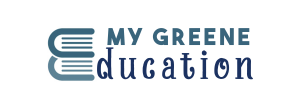Preparing for the SAT can often feel like a daunting task. As one of the most important exams for students aiming to pursue higher education, it demands a focused and strategic approach. But how do you know where to begin? How can you identify your strengths and weaknesses before diving into months of preparation? The answer lies in a SAT Diagnostic Test—an invaluable tool for anyone preparing for this pivotal exam.
What is a SAT Diagnostic Test?
A SAT Diagnostic Test is a short, simulated version of the SAT exam designed to provide a snapshot of your current abilities. It covers all sections of the actual test, including Math, Reading, Writing, and Data Analysis, but in a condensed form that can be completed in less time. This test serves as a starting point for your SAT prep journey, helping you understand your current level and where improvements are needed.
Unlike traditional full-length practice tests, a SAT Diagnostic Test focuses on analyzing your performance in a more compact setting. Think of it as a GPS for your SAT prep. It shows you exactly where you are, where you need to go, and the best route to take to get there.
Why Take a SAT Diagnostic Test?
- Pinpoint Strengths and Weaknesses
One of the most significant benefits of a SAT Diagnostic Test is its ability to highlight both your strong areas and the sections that need improvement. Without knowing where your weaknesses lie, you could be wasting valuable time studying topics that don’t need as much attention. For example, you may be a natural at math but struggle with reading comprehension. The diagnostic test identifies these gaps, allowing you to prioritize areas that require more focused study. - Strategic Study Planning
The results of your SAT Diagnostic Test will act as a roadmap, helping you tailor your study plan. Rather than approaching your SAT preparation blindly, you can allocate more time to the sections where you scored lower, thus maximizing your efficiency. By doing so, you avoid the trap of over-preparing in areas you’re already comfortable with and under-preparing in areas that could cost you valuable points. - Reduced Test Anxiety
For many students, taking the SAT can be a nerve-wracking experience. A SAT Diagnostic Test provides an opportunity to get familiar with the types of questions and format of the real test in a low-pressure environment. The more comfortable you are with the test format, the less anxiety you will feel on the actual test day. By understanding what to expect, you can focus on solving problems rather than dealing with test-day jitters. - Gauge Time Management Skills
Time management is a crucial component of success on the SAT. The diagnostic test allows you to practice pacing yourself under timed conditions, ensuring you can complete all sections without rushing. By reviewing your performance, you can identify if you’re spending too much time on certain types of questions or moving too quickly through others. This insight allows you to refine your timing strategies as you prepare for the actual SAT.
The Role of AI in SAT Diagnostic Tests
In today’s digital age, advancements in artificial intelligence (AI) have revolutionized how students prepare for standardized tests like the SAT. Many SAT Diagnostic Tests now incorporate AI-driven insights to offer more personalized feedback. Platforms like LearnQ.ai, for example, utilize AI to analyze a student’s performance and provide tailored recommendations for improvement.
This personalized approach means that you’re not just looking at a generic score report but receiving data-driven insights into how to optimize your study efforts. AI can even predict your potential SAT score based on your performance in the diagnostic test, giving you a clearer idea of what to expect on test day.
Moreover, AI tutors like “Mia,” which are integrated into some diagnostic platforms, provide additional support by explaining incorrect answers, offering similar questions for practice, and even helping you understand complex concepts more easily. The combination of AI and diagnostic testing creates a more targeted and efficient study process, ensuring you make the most of your prep time.
How a SAT Mock Exam Complements a SAT Diagnostic Test
While a SAT Diagnostic Test serves as the foundation for your preparation, incorporating full-length practice tests, also known as SAT mock exams, is equally important. A mock exam is a full-length replica of the SAT that simulates the actual test conditions. Once you’ve taken a diagnostic test and identified your weak areas, mock exams provide a chance to apply what you’ve learned in a real-world setting.
The primary difference between a diagnostic test and a mock exam lies in the level of detail and time commitment. Diagnostic tests are typically shorter and more focused on pinpointing weaknesses, while mock exams give you the full SAT experience, helping you build endurance and fine-tune your time management skills.
Taking multiple SAT mock exams throughout your preparation ensures that you’re not only learning the material but also becoming adept at handling the mental and physical stamina required to sit through the entire test. They help you measure progress over time, allowing you to track how well you’re addressing your weaknesses.
Using Your Diagnostic Results to Choose the Right Study Resources
After completing your SAT Diagnostic Test, it’s essential to use your results effectively. Here are some steps you can take to enhance your prep:
- Select Targeted Study Materials
Based on your diagnostic results, choose study materials that align with your needs. For instance, if your Math score was lower than expected, focus on SAT math prep books, online tutorials, or platforms that offer targeted math practice. Likewise, if reading comprehension was your weak spot, prioritize practice passages and vocabulary development tools. - Utilize Online Platforms and AI Tools
Leverage online SAT prep platforms that offer personalized study plans. Many tools, like LearnQ.ai, offer AI-driven study recommendations, adaptive learning modules, and interactive questions that are tailored to your performance on the diagnostic test. These resources provide targeted practice based on your unique strengths and weaknesses. - Set Milestones
Break your study goals into smaller, manageable milestones based on your diagnostic results. This approach allows you to track your progress and make adjustments as needed. For example, if you struggle with algebra, set a goal to improve your algebra score by a certain number of points before your next SAT mock exam. - Practice Consistently
Consistency is key when preparing for the SAT. Use your diagnostic test as a baseline and commit to regular practice. Aim to review your diagnostic results and take mock exams at regular intervals to measure your improvement. By staying consistent, you’ll gradually build the skills and confidence needed to excel on test day.
The Final Push: From Diagnostic to SAT Success
The journey from taking your SAT Diagnostic Test to acing the actual SAT is one of consistent effort, smart preparation, and strategic practice. The diagnostic test acts as the launchpad, offering a clear direction and helping you tailor your study plan to suit your needs. From there, incorporating SAT mock exams ensures that you’re applying what you’ve learned in real-world scenarios.
Remember, the SAT is not just about knowledge; it’s about strategy, time management, and endurance. The more you practice in conditions similar to the real exam, the better prepared you’ll be. With the right combination of a SAT Diagnostic Test, full-length practice tests, and targeted study resources, you’ll be well on your way to achieving your best possible score.
In conclusion, whether you’re just starting your SAT prep or looking to refine your existing strategy, taking a SAT Diagnostic Test is one of the smartest moves you can make. It provides invaluable insights into your performance, helping you identify areas for improvement and paving the way for a more effective and focused study plan. Combine that with regular SAT mock exams, and you’ll be fully equipped to tackle the SAT with confidence.







